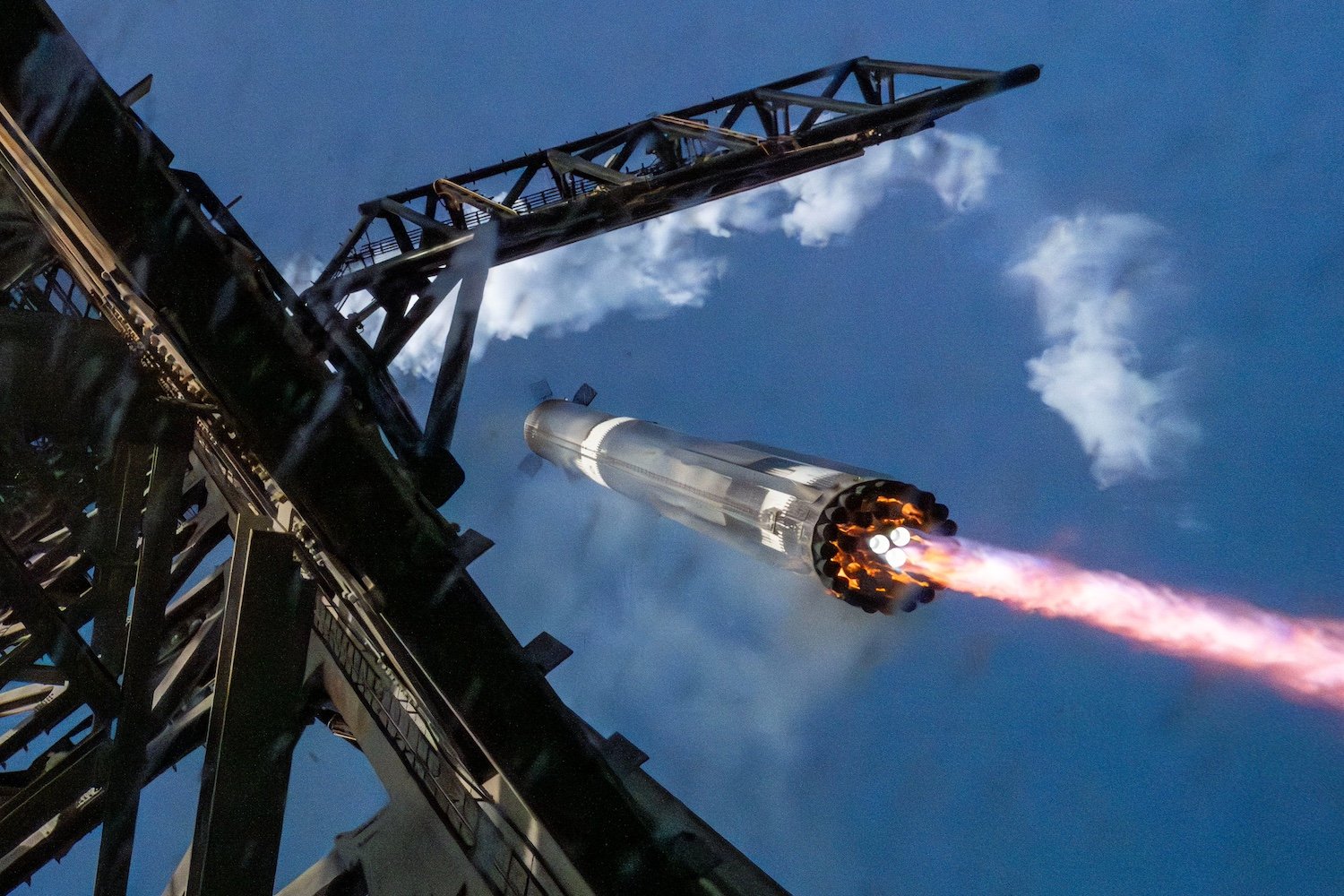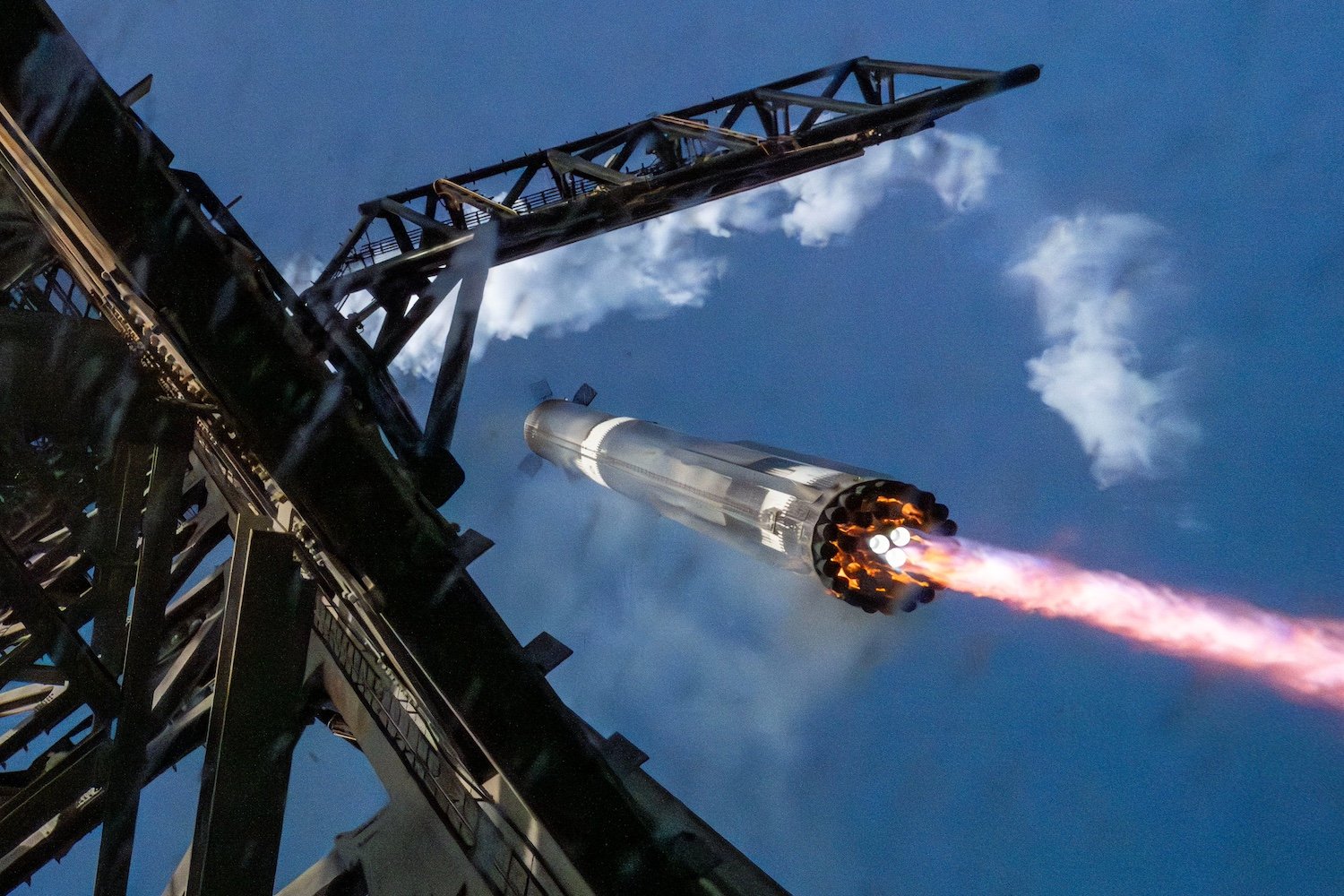SpaceX has launched its massive Starship rocket eight times and caught its Super Heavy booster three times in the giant mechanical arms of Mechazilla. Unlike Starship’s upper stage, the booster is now ready for its next steps toward achieving launch, landing, and reuse.
In a post shared on Thursday, SpaceX revealed that it was prepping to launch a Super Heavy Booster that had already flown before. The booster previously lifted off and returned during the rocket’s seventh test flight on January 16, and 29 of its 33 Raptor engines are “flight-proven,” the company wrote on X.
Static fire of the Super Heavy preparing to launch Starship’s ninth flight test. This booster previously launched and returned on Flight 7 and 29 of its 33 Raptor engines are flight proven pic.twitter.com/XBOvoZezvJ
— SpaceX (@SpaceX) April 3, 2025
SpaceX carried out a static fire test of the booster ahead of Flight 9, marking the first test of a Super Heavy Booster that has already flown to the edge of space, reporter Stephen Clark, at Ars Technica, pointed out. The booster, designated Booster 14, will fly again during Starship’s upcoming test flight. If it does, this will be the first pre-flown booster to launch again. SpaceX still hasn’t announced a date for Starship’s next launch.
SpaceX has been making major progress with Starship’s 232-foot-tall (71 meters) Super Heavy booster, catching the booster during three out of four attempts. However, the same can’t be said for the rocket’s upper stage, which has suffered back-to-back glitches during the last two test flights.
During flight 7 in January, Starship’s upper stage suffered an engine glitch that forced an early shutdown, causing it to break apart and rain down bits of rocket debris over Turks and Caicos in the Caribbean. Less than two months later, the upper stage suffered another major failure during flight 8, spinning uncontrollably before breaking apart a few moments after launch. Both times, the upper stage was supposed to make a soft splashdown off the coast of Western Australia about an hour after liftoff.
Starship is a fully-reusable launch vehicle, meaning that both its Super Heavy booster and the upper stage, known as Ship, need to be caught mid-air by the 400-foot-tall Mechazilla tower. So far, things have been looking good for the booster.




